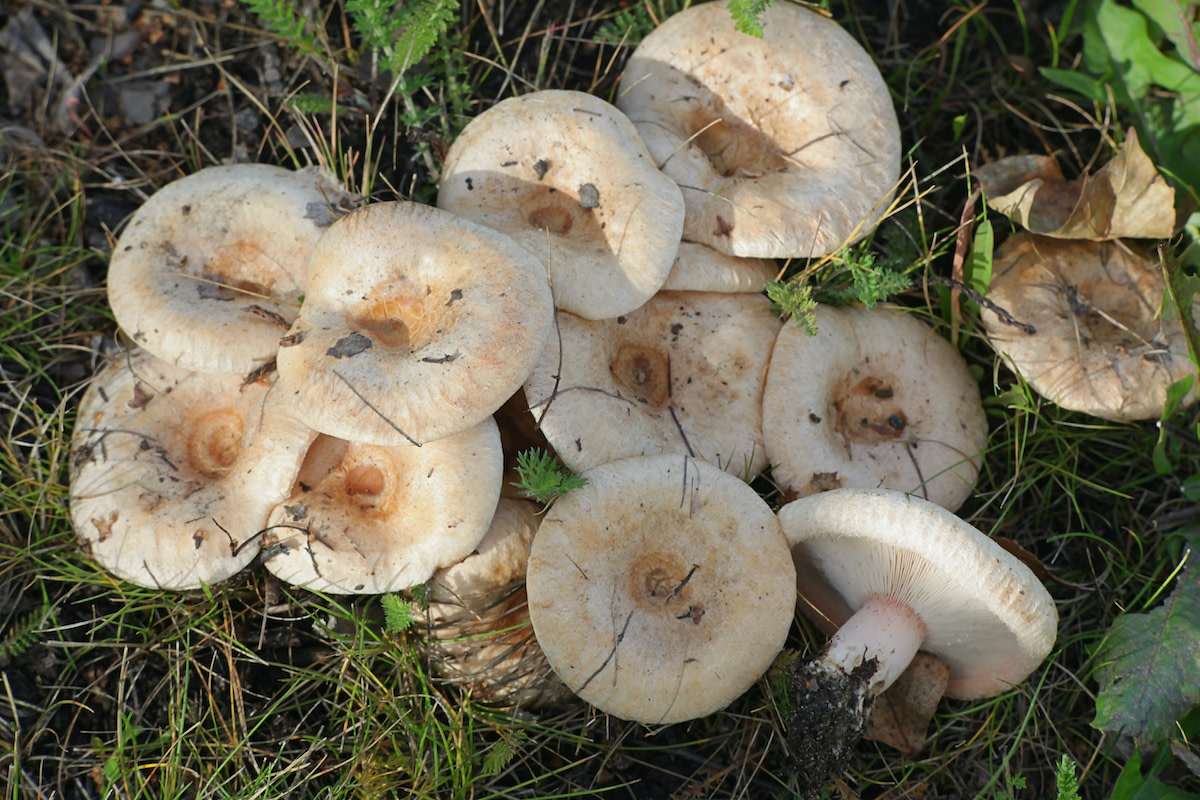8 Edible Mushrooms: How to Identify Edible Mushroom Types
Written by MasterClass
Last updated: Apr 18, 2022 • 4 min read
It’s essential to know the difference between what can nourish you and what can harm you, especially in a survival scenario. If you’re going mushroom foraging for the first time, you need to know the types of fungi you can eat and those you must avoid. Learn more about edible mushrooms and how to identify them with this basic field guide.
Learn From the Best
What Are Mushrooms?
Mushrooms are a type of fungus people consume both out in the wild and in homemade stir-fries, stews, and soups. People have also used medicinal mushrooms to treat ailments. Mycologists (fungus and mushroom experts) have made great strides in classifying the countless varieties of mushrooms, as well as distinguishing which are safe for human consumption and which aren’t.
You can find different types of edible mushrooms at your local grocery store, as well as in the wilderness. In either case, make sure to cook them before eating them since even edible mushrooms can cause stomach upset unless you first clean and then sauté, bake, or heat them in some other way.
Is It Safe to Eat Wild Mushrooms?
When you find different mushroom varieties in the wild, exercise caution. While mushroom poisoning leading to death is rare, you might still experience allergic reactions, gastrointestinal distress, and other serious health issues after consuming the wrong type of mushroom.
When you go mushroom hunting, scavenge for the types you know are edible and avoid or discard any you haven’t seen before. This sort of amateur mycological analysis might prove difficult at times, considering some edible and poisonous mushrooms look alike. Do your research in advance to learn the identifying markers of poisonous fungi, such as death cap or destroying angel mushrooms (both of the Amanita genus).
In general, if you identify common mushrooms you recognize from the grocery store out in the wild—like porcini mushrooms or truffles—you can likely eat them so long as you cook them first. Be certain they bear all the same signifiers a mycologist would consider essential for positive identification.
8 Common Edible Mushrooms and How to Identify Them
Whether you’re a beginner or a veteran mushroom hunter, it’s always useful to brush up on how to identify different types of mushrooms. Here are eight you can eat in the wild:
- 1. Chanterelle mushrooms: Part of the Cantharellus genus of fungi, these edible wild mushrooms sprout up from leaf litter across North America in late summer and early fall. Chanterelles are gold-orange and smell a little fruity. To distinguish them from mildly toxic jack-o’-lantern mushrooms, check their undersides—chanterelles have ridges that run down to the stem, whereas it’s easier to detach jack-o’-lanterns’ ridges.
- 2. Chicken mushrooms: Also known as chicken of the woods, chicken mushrooms (Laetiporus sulphureus) sprout their fruiting bodies amid conifers and other types of trees. They’re different from hen of the woods mushrooms (Grifola frondosa)—also known as maitake mushrooms—but both types are edible. Chicken mushrooms are flat, yellowish, and often grow from the sides of trees.
- 3. Cremini mushrooms: Also known as baby bella mushrooms, creminis have brown tips, white stumps, and a nutty flavor. Check for tightly woven gills underneath the tops. When these brown mushrooms mature, they actually turn into portobello mushrooms.
- 4. Giant puffball mushrooms: Known by the botanical name Calvatia gigantea, this white mushroom species grows worldwide. Cut these large, round, white common mushrooms in half to identify them—if they’re white and solid all the way through, they should be safe to cook and consume. White button mushrooms (Agaricus bisporus) look somewhat similar and are also edible.
- 5. King oyster mushrooms: These whitish, wild edible mushrooms get their common name from their appearance—their wavy tops look like giant open oyster shells. You can find king oyster mushrooms (Pleurotus ostreatus) sprouting from hardwood trees. King bolete mushrooms (Boletus edulis) are another large edible species.
- 6. Milk cap mushrooms: Reddish in color, milk cap mushrooms (Lactarius deliciosus) can be quite girthy. For mushroom identification for this fungus, look for their inverted tops stretching upward to the sun.
- 7. Morel mushrooms: If you’re seeking morels, look for mushrooms with a honeycomb appearance, then cut them down the middle. False morels (poisonous mushrooms that look similar) will be solid, while true morels are hollow. There are many different edible types to try, from yellow morels (Morchella esculenta) to black morels (Morchella elata).
- 8. Shiitake mushrooms: Similar to enokitake or enoki mushrooms (Flammulina velutipes), shiitake mushrooms (Lentinula edodes) also hail initially from Japan. Their meaty texture can be a terrific source of satiation and sustenance in the wild. Identify them by looking for their brownish, scaly tops and checking their undersides for tightly packed white gills.
Preparing for Wilderness Expeditions
Certain outdoor activities carry an elevated risk of serious injury. Wilderness scenarios require extensive survival gear, including but not limited to food, water, maps, protective clothing, and first aid, along with mental and physical fortitude. This article is for educational and informational purposes, and is not a substitute for hard skills and expertise.
Ready to Explore More of the Great Outdoors?
Prepare for any outdoor journey by grabbing a MasterClass Annual Membership and committing Jessie Krebs’s wilderness survival course to memory. As a former United States Air Force Survival, Evasion, Resistance, and Escape instructor, Jessie can teach you everything you need to know about packing for a trip (neon is the new black), purifying water, foraging (crickets: the other white meat), starting a fire, and signaling for help (forget SOS).
